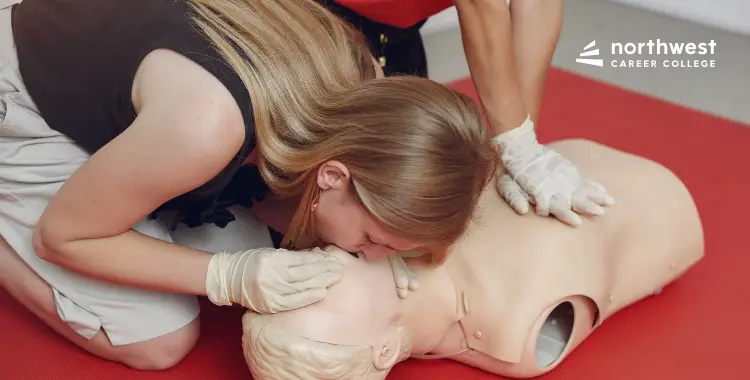CPR and AI: How Smart Devices Are Helping Respond to Cardiac Arrest
- November 11, 2025
- 459 views
- 3 min read
When someone has a heart attack, every second counts. Thanks to new smart devices and artificial intelligence (AI) being introduced nowadays, help can now respond faster and with greater accuracy than in the past.
In this blog, we’ll discuss how AI is being used to support CPR and emergency response. Instead of replacing people, this technology works alongside you to save more lives when it matters most.

What is Cardiac Arrest?
Cardiac arrest happens when the heart suddenly stops beating, cutting off blood flow to the brain and body. It’s scary, sudden, and can happen to anyone, at home, in public, or even during a typical day.
Many people don’t realize that fast action can save a life. Giving CPR right away can prolong a person’s chance of survival. The problem? Most people freeze, panic, or don’t recognize what’s happening in time. That’s where innovative technology is starting to make a real difference.
How Smart Devices Are Changing the Game
Technology isn’t just convenient; it’s becoming lifesaving these days. AI is embedded in many day-in, day-out-use items, e.g., smartwatches, smartphones, household assistants, and even medical alert systems.
Examples include smartwatches that detect abnormal heartbeats or unexpected falls and alert immediately. Phone apps like Pulsepoint automatically ping nearby CPR-credentialed responders when someone needs help. Smart home systems, even monitors or voice controllers, detect unusual activity, like someone falling to the ground and not getting up, and automatically call 911.
CPR and AI
When someone collapses from cardiac arrest, it’s easy to feel helpless, especially if you’ve never done CPR before. That’s where AI and smart devices are making a lifesaving difference.
As such, an ever-growing array of devices can now guide people through CPR in real time via simple verbal instructions or video prompts on-screen. Instead of freezing in terror, an average person can quickly become a first responder.
Some apps go even further by using GPS to direct you to the nearest AED (automated external defibrillator), which can restart a person’s heart. These devices are often found in schools, malls, gyms, and offices, but many people don’t know they’re nearby.
In some cutting-edge emergency systems, AI detects signs of cardiac arrest through wearables or smart home monitors and gets help underway even before anyone picks up the phone. These devices turn ordinary folks into heroes, giving them confidence and support where every second counts.
Conclusion
AI and innovative technology are changing how we respond to emergencies, making CPR quicker, easier, and more accessible for everyday people. But no matter how advanced the tools become, they still need someone like you to take action.
Training in CPR means you’re ready to step in and save a life, with or without a nearby device. Get CPR certified at Northwest Career College and be the difference when every second counts.




